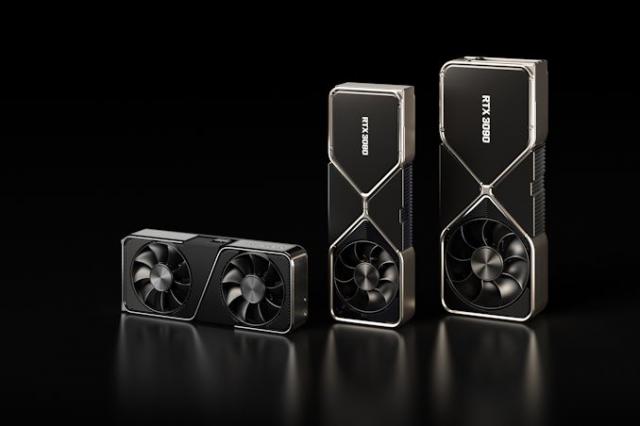
PS5 and Xbox Series X|S Ray-Tracing is More Flexible Than Nvidia RTX 30 Series, Says 4A Games - News
by William D'Angelo , posted on 16 February 2021 / 1,662 Views4A Games CFO in an interview with Wccftech discussed ray-tracing that is available in the PlayStation 5, Xbox Series X|S, and the new Nvidia RTX 30 Series. He said that ray-tracing that is available in the next-generation consoles offers more flexibility than what is available in the Nvidia RTX 30 series.
"As for the NV 3000-series, they are not comparable, they are in different leagues in regards to RT performance," said Shyshkovtsov. "AMD’s hybrid raytracing approach is inherently different in capability, particularly for divergent rays.
"On the plus side, it is more flexible, and there are myriad (probably not discovered yet) approaches to tailor it to specific needs, which is always a good thing for consoles and ultimately console gamers. At 4A Games, we already do custom traversal, ray-caching, and use direct access to BLAS leaf triangles which would not be possible on PC."

He was also asked if he thinks ray-tracing will be more commonly used in games in the future and he thinks that is the case.
"As for future games: the short answer would be yes," he continued. "And not only for graphics, by the way. Why not path-trace sound for example? Or AI vision? Or some explosion propagation? We are already working on some of that."
A life-long and avid gamer, William D'Angelo was first introduced to VGChartz in 2007. After years of supporting the site, he was brought on in 2010 as a junior analyst, working his way up to lead analyst in 2012. He has expanded his involvement in the gaming community by producing content on his own YouTube channel and Twitch channel dedicated to gaming Let's Plays and tutorials. You can contact the author at wdangelo@vgchartz.com or on Twitter @TrunksWD.
More Articles
Ah ye old "this is better than X because", yet he won't explain the pros of the other side, brilliant and predictable
AMD needs the flexibility to produce remotely similar results as Nvidia. Still I would prefer the card that does it all over the card that cuts (a lot of) corners and still strugles.
Absolutely not. nVidia's RTX 3000 series Ray Tracing is a step ahead of anything AMD has right now.
He said they're not in the same league. I don't know why he's trying to do some sort of damage control. It's pretty clear the gap is only going to grow.
Consoles are consoles. PC's are PC's. I don't think anyone expects consoles to be on the cutting edge. They're less than 500 dollar pieces of electronics that are built around playing games. Price and convenience have always been their place in the market.
So yeah, idk why this guy is trying to spin it as "the consoles can do things the pc can't". The 3000 series doesn't have to worry about compromising as much when it comes to ray tracing.
The not in the same league statement obviously was in favour of Nvidia ,the AMD RT praise was for its flexibility, this is really not much different from saying series x is stronger and then praising PS5 for its strength in other areas.
Except nVidia's RT cores are just as programmable as AMD's Ray Tracing cores.
Remember they are just doing INT and FP calculations on dedicated processing pipelines.
In RT benchmarks nVidia has a clear advantage, whilst AMD is able to be competitive in general rasterization.
Don't get me wrong, I love AMD's hardware, I have ran with their GPU's for decades due to the inherent price/performance advantages... But they do have shortcomings as well.
All of those advantages you mentioned come under the heading of Nvidia being stronger , and sure it boils down to both doing INT and FP, but versatility doesn't mean different , but he does mention that when talking about divergent ray capability , now my take for what it's worth and that's very little , it seems like if what he says is correct it will be useful in RT modeling for consoles , but not really needed in the PC space.
When Rays of light starting from a point travel in different directions, that is divergent ray tracing.
When rays of light are coming from different directions to meet at a set point, that is convergent ray tracing.
If you can eloquently describe what hardware nuances AMD's hardware holds that potentially gives them an advantage in either scenario... Then I shall eat my hat.
Otherwise it's just pointless rhetoric without any real basis in reality.
I'm happy being ineloquent thank you very much,but it's not me it's the article talking about divergent rays and I know what divergence means ,listen I'm not arguing his case my take was there seemed to be a confusion over the use of the word versatile and the other was pointing to what he said hoping to engage in a conversation an example would be at the bottom of the story where he mentions stuff that they are doing that can't be done on PC and would appreciate you taking me through it in regard to the tech not so much his rhetoric .
There isn't any confusion on my end, Versatile implies that a piece of hardware has capabilities that another does not.
Ray Tracing Audio? nVidia has that with VRWorks.
A.I? You do realize nVidia has a crap-ton of Tensor cores which are actually amazing for A.I routines?
Explosion Propagation? What hardware block is that even leveraging on the Radeons?
my bad I meant the bottom of the first lot of text above the pic , as for the sound and other surely he's talking in a general sense about the future use of RT to implement those features rather than just focus on illumination , like I said before versatile / flexible doesn't mean different it might simply be easier to tailor to specific needs;
btw I think he should have talked about AMD RT on it's own or vice versa , please don't take any of this as a slight to your expertise
l value your insight and there are always counterpoints I should take notice of ,plus his vague answers doesn't help either of us, but in the end It's just how I read the article cheers.
Yeah, but where were the pros of Nvidia's side?.
Saying "not in the same league" doesn't actually list any pros, like he just did for AMD. It's clearly damage control/forced praise, because no techie in the industry not bribed or told what to say, actually lists pros for one side and not the other.
Look at Hardware unboxed for example
I get the feeling that the tech site may have had more to do with it going the way it did, especially like you pointed out the pic in a general discussion on the merits of two systems I agree , then again he might have thought that the strengths of Nvidia RT was well documented and wanted to shine a light on their RT work on consoles either way it was pretty vague stuff.
But we've known what AMD was coming up with thanks to journalists and AMD themselves displaying and directly telling us via showcases on what to expect from them.
It'd be so alien, so weird for a company that's this big to have hidden secrets like known scalable tech, or even tech in general being scalable, like I'd expect it to be right off the bat, so that kinda goes without saying.
Could you imagine if it wasn't scalable, and it was just gonna be flat out bad for both consoles from start of the gen till the finish?. if you get what I mean, you'll see why I'm picking on the guy in the first place.
I find that consoles always get their chance to shine with their tech, and with PC, it's just known and not really held in much if any higher regard, because it's told by the crowd/a tiny select journos, that said tech is "locked" behind high end expensive cards, thus it doesn't get nearly as much praise.
Like even if it was expensive tech, I still wish these people would give the praise where it's due, and Nvidia hopped on the RT wagon first, and are now into their 2nd gen. You're seeing high DLSS praise from us, the gamers, but these guys?, not so much.
I think you guys both missed what he was saying. Apparently, you can do hardware-accelerated RT things in AMD's design that are not hardware-accelerated in NVDIA's RTX 30 series. But, for all the current approaches we have seen, NVIDIA's design is in a league of its own in terms of performance. This makes sense to me; AMD was ahead of NVIDIA in a lot of areas in the past, including first to use unified shaders, first to DX10.1, etc. I guess it wouldn't surprise me if their RT design was more flexible but lower performance than NVIDIA's; that is the way it has been for quite sometime actually.
A gymnast can do things a boxer can't. But what's the competition? Boxing or gymnastics? I just think it's a weird thing to say. Especially since everything is very programmable.
The Nvidia cards have more tricks up their sleeve than just ray tracing too. It just seems strange to try to defend something that no one was even talking about. But he's trying to say don't worry about the lack of ray tracing power. It can do other things too.
I just don't understand the purpose of the statement. And flexibility is another way of saying trading one aspect for another. But ray tracing was a big talking point of these consoles. Dedicated ray tracing hardware. So that's fine if you can use it for another purpose. But you're making sacrifices to do so.
That's why I said it's spin. What is he trying to prove?
That not how read it, to me it was simply strong RT v flexible RT and the mention of sound was an example of something beside illumination that both can do with RT.
What can AMD's GPU's hardware accelerate that nVidia GPU's cannot?
Name it.
I am a hardware enthusiast, so I wouldn't have a fundamental understanding of this stuff... No point just throwing out a hypothetical assertion without anything to back it..






















 Essay Pro
Essay Pro